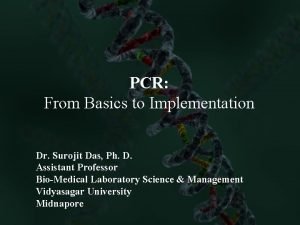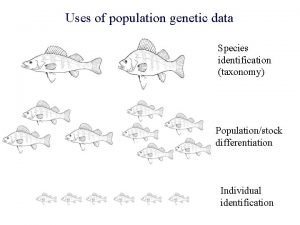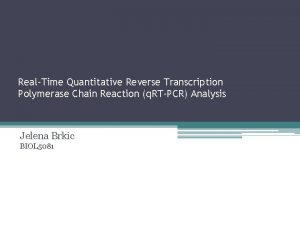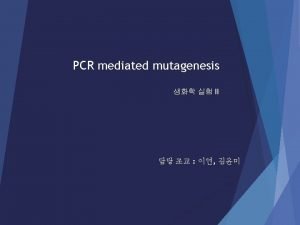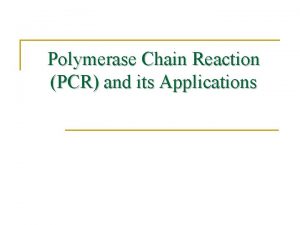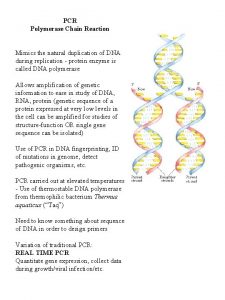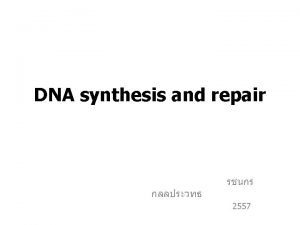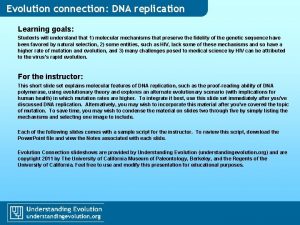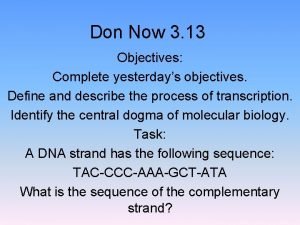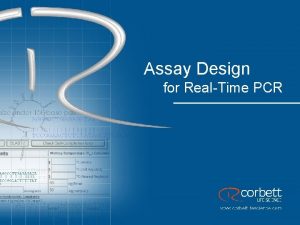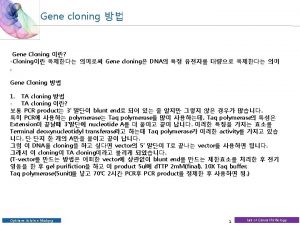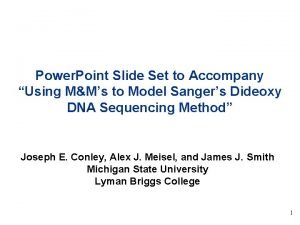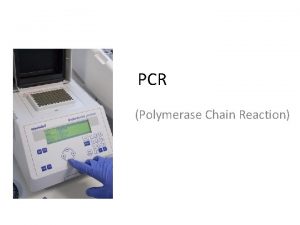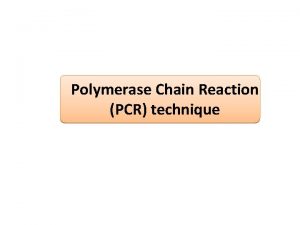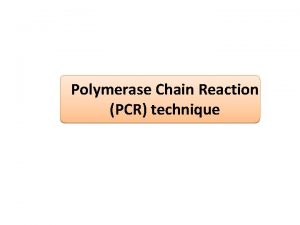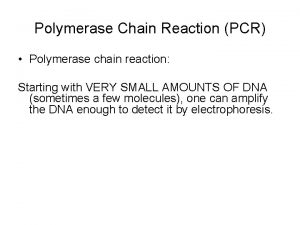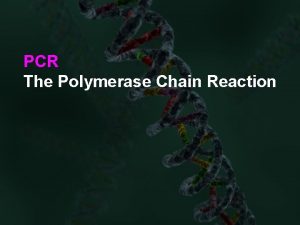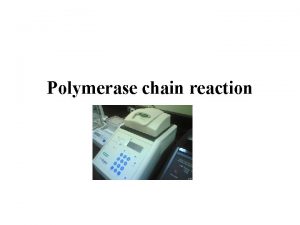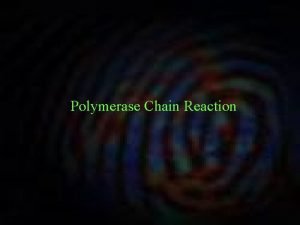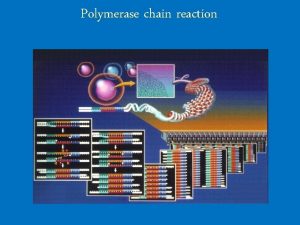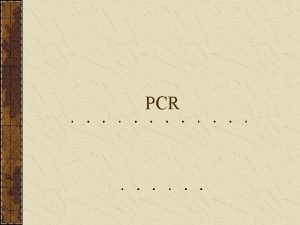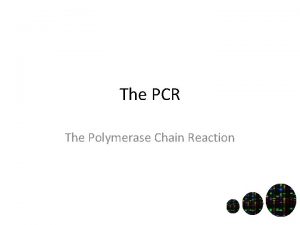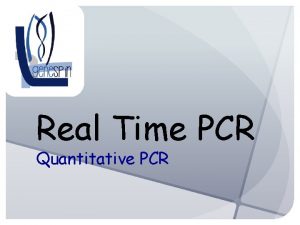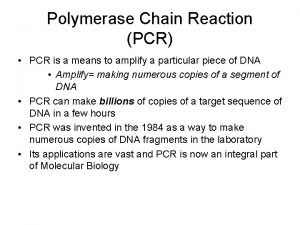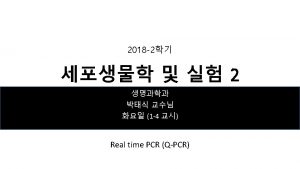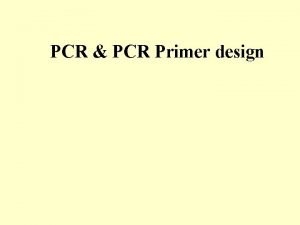PCR Polymerase Chain Reaction PCR Is a revolutionary





















- Slides: 21

PCR Polymerase Chain Reaction

PCR Is a revolutionary method developed by Kary Mullis in 1983. PCR is used in molecular biology to make many copies of small sections of DNA. It is based on the ability of DNA polymerase to synthesize new strand of DNA complementary to a template strand.

Because DNA polymerase can only add a nucleotide onto a preexisting 3'-OH group, it needs a primer to which it can add the first nucleotide. This requirement makes it possible to delineate a specific region of template sequence that the researcher wants to amplify. At the end of the PCR reaction, the specific sequence will be accumulated in billions of copies, called amplicons.

The Nobel Prize in Chemistry 1993 Kary B. Mullis "for contributions to the developments of methods within DNA-based chemistry" "for his invention of the polymerase chain reaction (PCR) method”

Taq polymerase

1. Enzymes are proteins that speed up reactions without being consumed themselves. 2. The most important enzyme in a PCR reaction is called taq polymerase. 3. A polymerase is an enzyme that attaches molecules together (i. e nucleotides). 4. Every cell that has DNA has its own polymerase that takes care of replication of DNA. 5. PCR uses a polymerase from a species of bacteria, Thermus aquaticus, which normally lives in hot springs.

Thermus aquaticus

Thermal Cycler • Is a laboratory apparatus used to amplify segments of DNA via PCR). • The device has a thermal block with holes where tubes holding the reaction mixtures can be inserted. • The cycler then raises and lowers the temperature of the block in pre-programmed steps.

Materials of PCR target DNA Taq DNA polymerase 2 Primers ~20 nucleotides in length Forward and reverse the four DNTP’S Adenine Thymine Cytosine Guanine cofactor Mg. Cl 2.

Locate the Target Sequence Scientists determine which GENE they are interested in studying. Locate Primers at the beginning and end of gene.

Step 1 Denaturing 60 seconds @ 94°C. Hydrogen bonds between bases break, & backbones separate.

Step 2 Annealing 60 seconds @ 60°C. Forward and reverse primers bond to template DNA.

Taq Polymerase • Once primers anneal, Taq Polymerase can attach to them.

Step 3 Extension 2 minute at 72°C. Taq Polymerase adds DNTP’s to complete the DNA copy.


The exponential amplification of the gene in PCR.

Amplification

Cycle 3 Obtain two copies of target DNA

Cycle 30 1, 073, 741, 764 target copies

Is there a gene copied during PCR and is it the right size ?

Applications of PCR A quick, reliable method for detecting all manner of mutations associated with genetic disease. Detect unwanted Genetic material Duchene muscular dystrophy Bacterial or viral infection (HIV). Amplify degraded DNA samples Egyptian mummy Termite in amber
 Application pcr
Application pcr Polymerase chain reaction
Polymerase chain reaction Polymerase chain reaction
Polymerase chain reaction The three steps of polymerase chain reaction
The three steps of polymerase chain reaction Site:slidetodoc.com
Site:slidetodoc.com Pcr phases
Pcr phases Polymerase chain reaction
Polymerase chain reaction Grazing food chain diagram
Grazing food chain diagram Helicaee
Helicaee Enzyme involved in dna replication
Enzyme involved in dna replication Dna polymerase
Dna polymerase Whats primase
Whats primase Adn polymérase
Adn polymérase Transcription
Transcription Template strand, new strand, base pair, and dna polymerase.
Template strand, new strand, base pair, and dna polymerase. Rt pcr primer design tool
Rt pcr primer design tool Dna prokaryot
Dna prokaryot Taq polymerase
Taq polymerase Dna polymerase
Dna polymerase Types of dna polymerase in eukaryotes
Types of dna polymerase in eukaryotes Rna polymerase
Rna polymerase Replication fork
Replication fork
